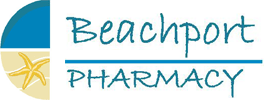Mar
2013
Some South American help to manage arthritis
Some South American help to manage arthritis 6th March 2013 No. 1348
Llamas are domesticated animals native to the Americas and from the same family as camels and alpacas. Unlike alpacas, bred mostly for their fibre, lamas are more like camels in as much as they are widely used as pack animals.
Now, it seems llamas may be able to help unlock the key to the treatment of a particular form of arthritis. Chemicals from the immune system of llamas have inspired the development of a drug which, at least in early trials, appears to relieve the pain and inflammation of rheumatoid arthritis (RA).
RA is not the most common form of arthritis but it is one of the most distressing and disabling. Arthritis is often thought of as a single disease, but it’s really an umbrella term used to describe well over a hundred different medical conditions – conditions which are similar to the extent that they all involve our bones and muscles and particularly the joints where two or more of our bones meet.
Arthritis Awareness Week (17 – 23 March) gives us an opportunity to reflect not only on the problem, but also, in a positive way, on how we can control the symptoms and enable people with arthritis to lead normal active lives.
In conjunction with Arthritis Australia (the peak patient support organisation), the Pharmaceutical Society of Australia has developed information and materials to help ensure arthritis can be managed effectively. These materials include fact cards on osteoarthritis, rheumatoid arthritis and gout.
Osteoarthritis (OA) affects the weight bearing joints: the legs, the shoulders, the knees and the lower spine. Often the hands are also affected, especially at the base of the thumb and the end joints of the fingers.
Presently there is no cure of OA, so all treatment is aimed at achieving symptom control. Effective management of OA involves a combination of strategies: joint protection and energy conservation, periods of both rest and exercise, physical aids, medication – both oral and injectable and, usually as a last resort, surgery.
In so far as medicines are concerned, as the primary aim of treatment is to reduce pain, simple pain relievers are the first choice for OA; and paracetamol is the best option.
For optimum results paracetamol should be taken not just now and again but routinely – 3g to 4g per day. This can be either two 500mg tablets up to four times daily, or two of the higher strength (Panadol Osteo) three times daily.
There is some evidence from clinical trials that glucosamine sulphate (1500mg/day) decreases the pain associated with OA of the knee joint. There may be benefit for other joints as well; however, it should be noted that results from later studies have not been universally supportive of the early trials.
Gout is the only form of arthritis where it is likely that some foods can aggravate the condition (check out the Gout fact card), but there is evidence that some foods will actually help other inflammatory forms of arthritis such as RA.
Specifically, the beneficial foods are those rich in what we know as omega-3 fatty acids, and the best sources of the omega-3 are oily fish. Olive oils and oils and spreads from flaxseed, canola and wheat germ are also beneficial.
Supplements of fish oil and krill oil can be used if fish is not regularly on your menu. Your pharmacist will be able to advise you on the most appropriate product and the correct dose.
Meanwhile, the arthritis fact cards are available from pharmacies around Australia providing the Pharmaceutical Society’s (PSA) Self Care health information. Check out the PSA website at www.psa.org.au and click on “Self Care” then “Find a Self Care Pharmacy”. There are also a few other fact cards with helpful advice for sufferers of arthritis. These include Pain Relievers, Preventing Falls, Relaxation Techniques and Weight and Health.
Some South American help to manage arthritis 6th March 2013 No. 1348
Llamas are domesticated animals native to the Americas and from the same family as camels and alpacas. Unlike alpacas, bred mostly for their fibre, lamas are more like camels in as much as they are widely used as pack animals.
Now, it seems llamas may be able to help unlock the key to the treatment of a particular form of arthritis. Chemicals from the immune system of llamas have inspired the development of a drug which, at least in early trials, appears to relieve the pain and inflammation of rheumatoid arthritis (RA).
RA is not the most common form of arthritis but it is one of the most distressing and disabling. Arthritis is often thought of as a single disease, but it’s really an umbrella term used to describe well over a hundred different medical conditions – conditions which are similar to the extent that they all involve our bones and muscles and particularly the joints where two or more of our bones meet.
Arthritis Awareness Week (17 – 23 March) gives us an opportunity to reflect not only on the problem, but also, in a positive way, on how we can control the symptoms and enable people with arthritis to lead normal active lives.
In conjunction with Arthritis Australia (the peak patient support organisation), the Pharmaceutical Society of Australia has developed information and materials to help ensure arthritis can be managed effectively. These materials include fact cards on osteoarthritis, rheumatoid arthritis and gout.
Osteoarthritis (OA) affects the weight bearing joints: the legs, the shoulders, the knees and the lower spine. Often the hands are also affected, especially at the base of the thumb and the end joints of the fingers.
Presently there is no cure of OA, so all treatment is aimed at achieving symptom control. Effective management of OA involves a combination of strategies: joint protection and energy conservation, periods of both rest and exercise, physical aids, medication – both oral and injectable and, usually as a last resort, surgery.
In so far as medicines are concerned, as the primary aim of treatment is to reduce pain, simple pain relievers are the first choice for OA; and paracetamol is the best option.
For optimum results paracetamol should be taken not just now and again but routinely – 3g to 4g per day. This can be either two 500mg tablets up to four times daily, or two of the higher strength (Panadol Osteo) three times daily.
There is some evidence from clinical trials that glucosamine sulphate (1500mg/day) decreases the pain associated with OA of the knee joint. There may be benefit for other joints as well; however, it should be noted that results from later studies have not been universally supportive of the early trials.
Gout is the only form of arthritis where it is likely that some foods can aggravate the condition (check out the Gout fact card), but there is evidence that some foods will actually help other inflammatory forms of arthritis such as RA.
Specifically, the beneficial foods are those rich in what we know as omega-3 fatty acids, and the best sources of the omega-3 are oily fish. Olive oils and oils and spreads from flaxseed, canola and wheat germ are also beneficial.
Supplements of fish oil and krill oil can be used if fish is not regularly on your menu. Your pharmacist will be able to advise you on the most appropriate product and the correct dose.
Meanwhile, the arthritis fact cards are available from pharmacies around Australia providing the Pharmaceutical Society’s (PSA) Self Care health information. Check out the PSA website at www.psa.org.au and click on “Self Care” then “Find a Self Care Pharmacy”. There are also a few other fact cards with helpful advice for sufferers of arthritis. These include Pain Relievers, Preventing Falls, Relaxation Techniques and Weight and Health.


















